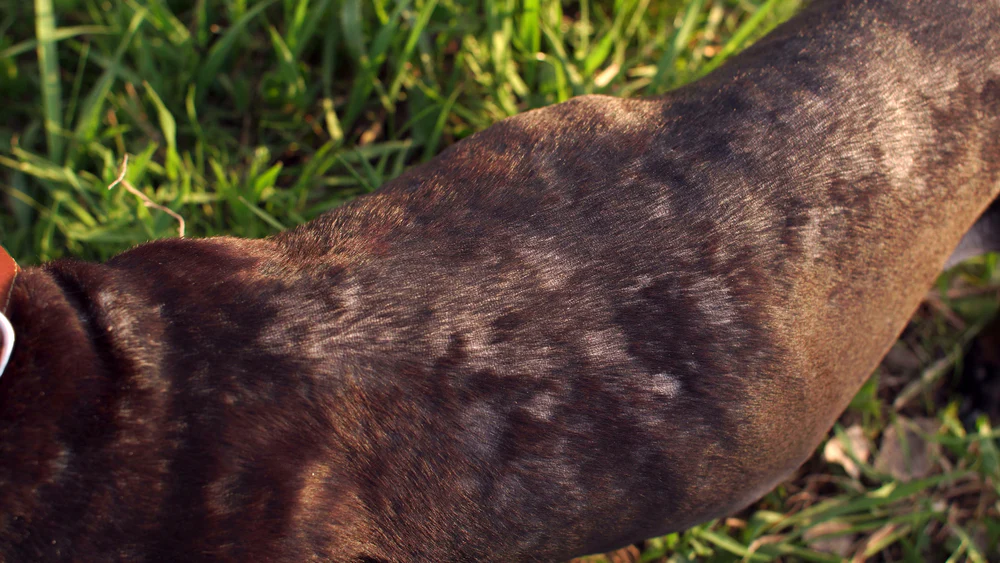You notice a weird bald patch on your dog’s leg. Maybe it looks a little scaly, maybe your pup’s been scratching it more than usual.
You Google it. And bam, the word ringworm pops up, and now you’re spiraling.

Is it serious? Can you get it too? Do you need to lock your dog away in some sort of quarantine cell?
Let’s slow it down a bit. Ringworm sounds scarier than it is, but it’s definitely something that needs attention, and yes, isolation is usually part of the plan.
So How Long Are We Talking?
On average, most dogs with ringworm need to be quarantined for about two to six weeks. Yep, it’s a stretch. Some cases can clear up faster with treatment, while others drag on for months if not managed right.
That timeframe isn’t just about the skin healing. It’s about keeping the fungus from spreading to you, your kids, your other pets, or that cat next door who always sneaks in like he owns the place.
The exact duration depends on how early you caught it, how your dog responds to treatment, and how consistent you are with cleaning up the environment.
What Does Quarantine Actually Look Like?
Quarantine doesn’t mean banishing your dog to the backyard for a month. It usually means keeping them in one area of your home that’s easy to clean, like a tiled laundry room or a gated part of the kitchen.
Try to limit soft furnishings, rugs, or bedding that can’t be washed easily. Ringworm spores can hang out on surfaces, in dust, or even on fur your dog sheds while scratching. It’s like glitter, it gets everywhere.
If you’ve got other pets, you’ll need to keep them away until your infected pup gets the all-clear. And yeah, that can feel nearly impossible. Especially if they’re used to cuddling or playtime together.
How You’ll Know It’s Safe To Stop
The safest way to know when your dog is no longer contagious is with a clean fungal culture test from your vet. Just because the bald patches are gone doesn’t mean the fungus is.
Some vets will recommend doing one or two follow-up tests about a week or two apart. A negative result usually means your dog can start mingling again, though keep in mind spores might still be lurking in the environment if things weren’t cleaned thoroughly.
Look for signs like hair regrowth, no new lesions, and less itching. That usually means things are going in the right direction.
Keeping Things Clean
You’ll want to vacuum like a maniac. Floors, baseboards, furniture, dog beds, all of it. And then go over hard surfaces with a pet-safe antifungal cleaner. Bleach diluted with water works well too, but always make sure it’s safe for dogs if they’re nearby.
Wash bedding and soft toys in hot water. Dry on high heat. And do it often. You’ll feel like you’re doing laundry non-stop, but it really helps reduce reinfection risks.
If you’ve got multiple pets, consider treating everyone preventively. Spores don’t always show symptoms right away, but they can still spread the fungus.
Caring Without Cross-Contaminating
Yes, you can still snuggle your dog, but you’ve got to be smart about it. Wear long sleeves or gloves if you’re applying ointments.
Wash your hands after every interaction. And avoid letting them hang out on your couch, bed, or clothes.
Some owners rotate which family member handles care each day, so not one person gets overloaded.
Others keep a small “quarantine kit” near the isolated dog space with wipes, disposable gloves, laundry bags, and snacks for both the dog and the human.
Don’t Wait Too Long To Involve The Vet
If your dog isn’t improving after a couple weeks of home care, or if more patches keep popping up, get back in touch with the vet. You might need oral meds or a medicated shampoo that packs a bigger punch.
Trying to ride it out on your own for too long can actually make quarantine take even longer. Plus, untreated ringworm can cause discomfort for your dog, and probably you too, if it spreads.
Take A Breath, It Gets Better
Ringworm is annoying. It’s messy. It’s contagious. But it’s not a life sentence. Most dogs recover fully and go right back to their normal happy selves.
You’ll get through it, even if it feels like your house is a cross between a vet clinic and a disaster zone for a few weeks. It just takes some care, consistency, and the occasional “oh well, that towel’s going in the bin” moment.
Have you ever dealt with ringworm in a dog before, and how long did your quarantine last?